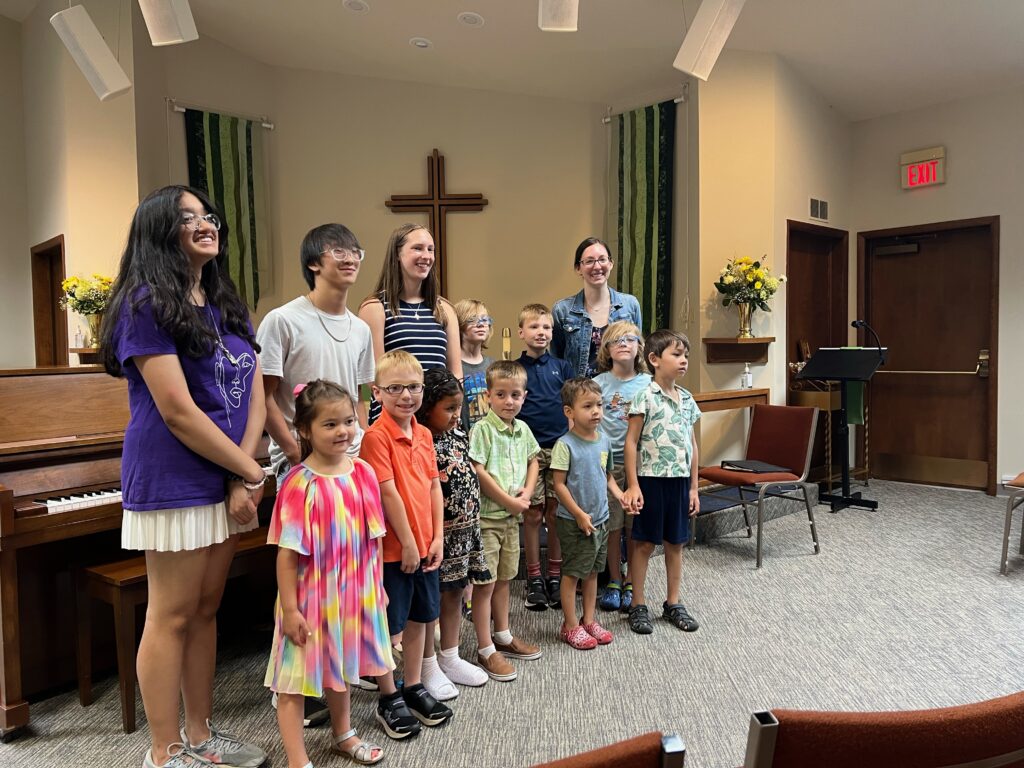
This past weekend, I hosted two informal summer recitals for my students. They both went well, and I was pleased with how our “creativity” themed focus played out.
Here’s a few photos and reflections on how it went.
Recital #1 in Ohio
The first recital, on Saturday, was held in Ohio for my online students still based there (where I lived for eight years prior to moving to Michigan in December of 2019).
On our drive down to Ohio, we stopped to visit one of my adult students. She and her husband are wonderful hosts, and it was fun to spend time together in person. She recently celebrated her 80th birthday! I surprised her by showing her name newly added on the Legacy Award plaque that hangs in my studio — recognizing the fact that she has studied with me for 8 years.
The Legacy Award is an idea that comes from my colleague and friend, Christina Whitlock. She mentions it on Amy Chaplin’s blog HERE, where you’ll find an entire guest post by Christina full of ideas for building community and teamwork in your studio.
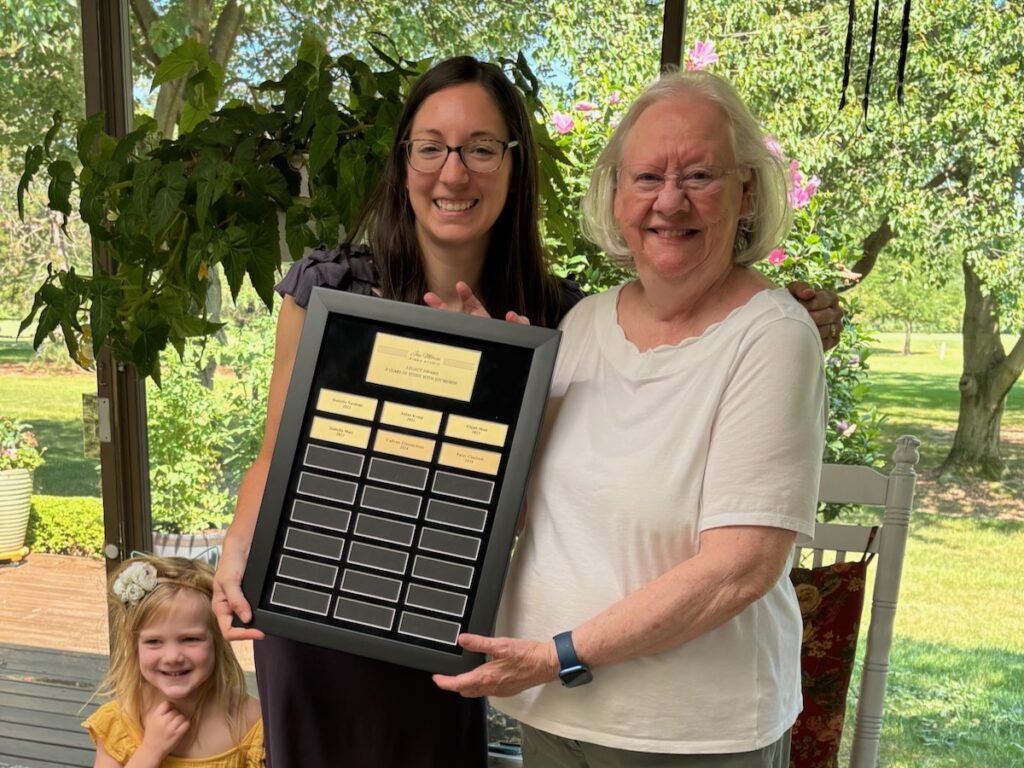
Here’s another wonderful student who also earned her place on the Legacy Plaque this year.

Our recital venue was the Senior Center. The room is filled with round tables, which worked well for us to enjoy a light lunch together during our short recital.
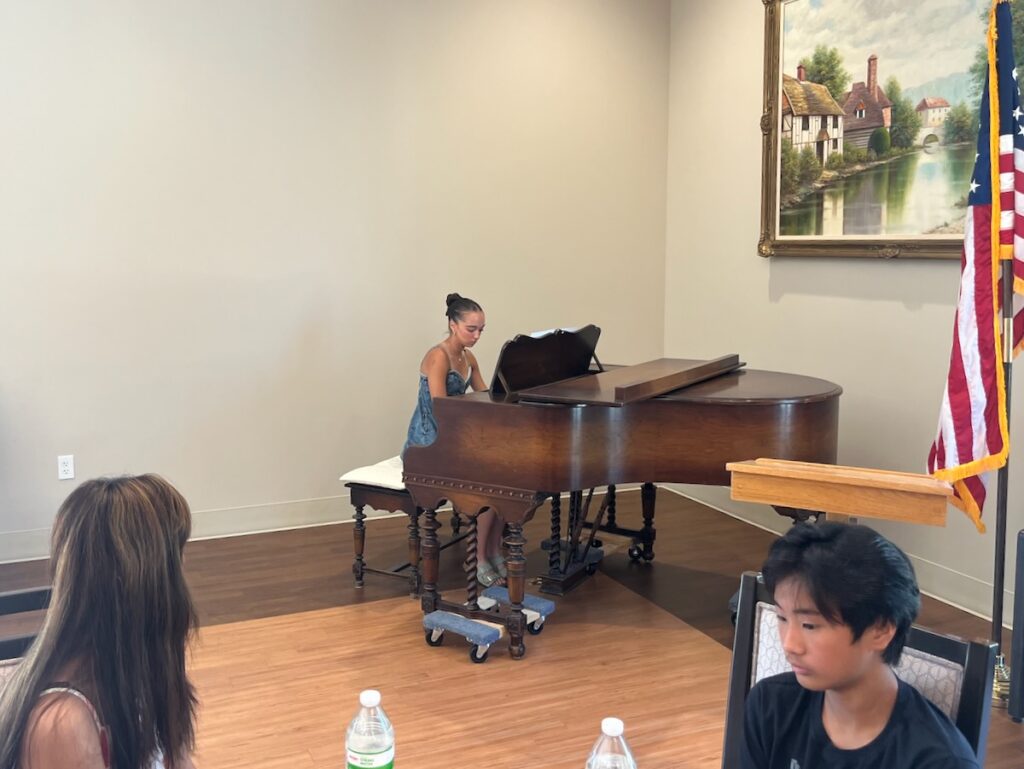
Our “creativity” recital theme was something I was interested in for a couple of reasons. For one, I thought it aligned well with this year’s theme for my upcoming Retreat at Piano Manor for piano teachers and would give me some recent experiences to share about. I also thought the theme of creativity fit well with my teaching more generally as I am gradually incorporating more Music Learning Theory (MLT) into my approach. Dr. Gordon believed vocal and instrumental improvisation was a crucial skill to develop, ideally before and alongside learning to read notation. My students and I are taking baby steps towards using bits of improvisation more and more in our lessons.

Improvisation can sometimes seem like a big, scary thing, but we can keep in mind that we ALL improvise, all the time. We improvise in language constantly, when we spontaneously speak and communicate with others. Improvisation doesn’t have to mean creating something out of seemingly nothing; it is a matter of using what we know in-the-moment. In music, we are actually improvising when our interpretation of a given piece differs from one performance to the next. A basic form of improvisation is simply changing things.
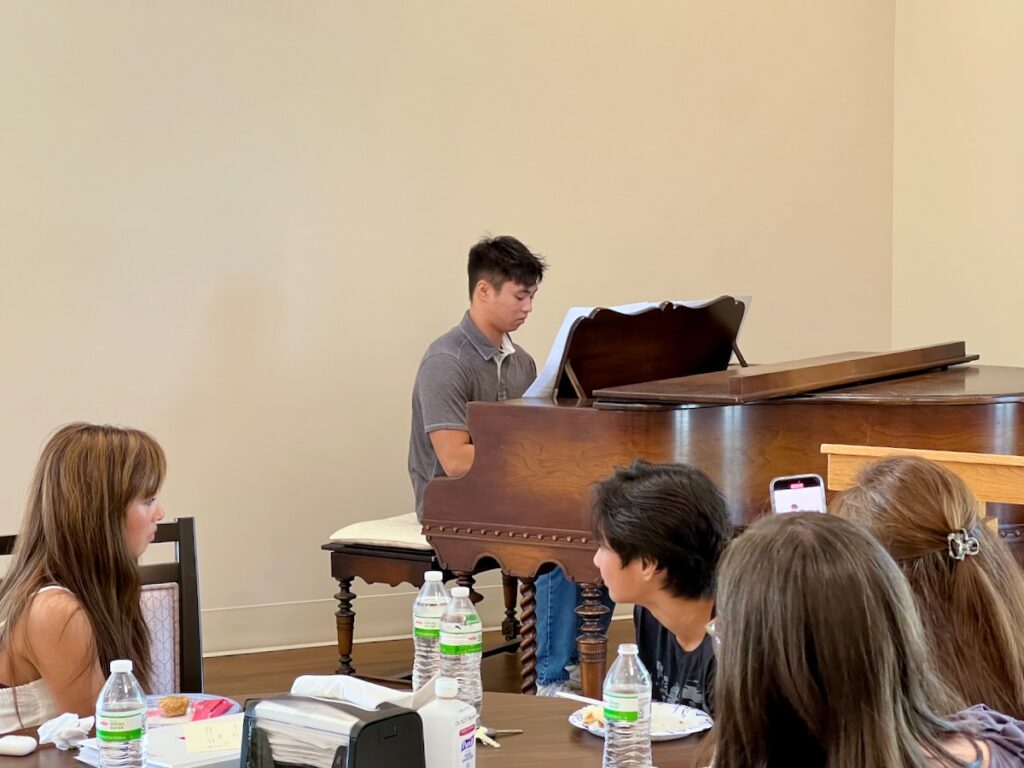
I encouraged my students to play two pieces, with at least one being either a piece they had changed to make their own, or a piece they composed themselves.
My youngest students played pieces in original form followed by a changed version of the piece. I encouraged simple changes, such as shifting the hands into a different register, changing the dynamics, changing the pitches, or changing the rhythm. Some young students were more loose with it, changing the piece beyond recognition, which is okay as well! 🙂
Older students added melodic variations to a piece (such as during a repeated section in a sonatina), or filled out the LH accompaniment in their own way. Some students created their own arrangements or mashups of familiar tunes, such as “Canon in D” and “Heart and Soul”. It wasn’t hard to come up with simple ways to integrate improvisation into the pieces they wanted to play!
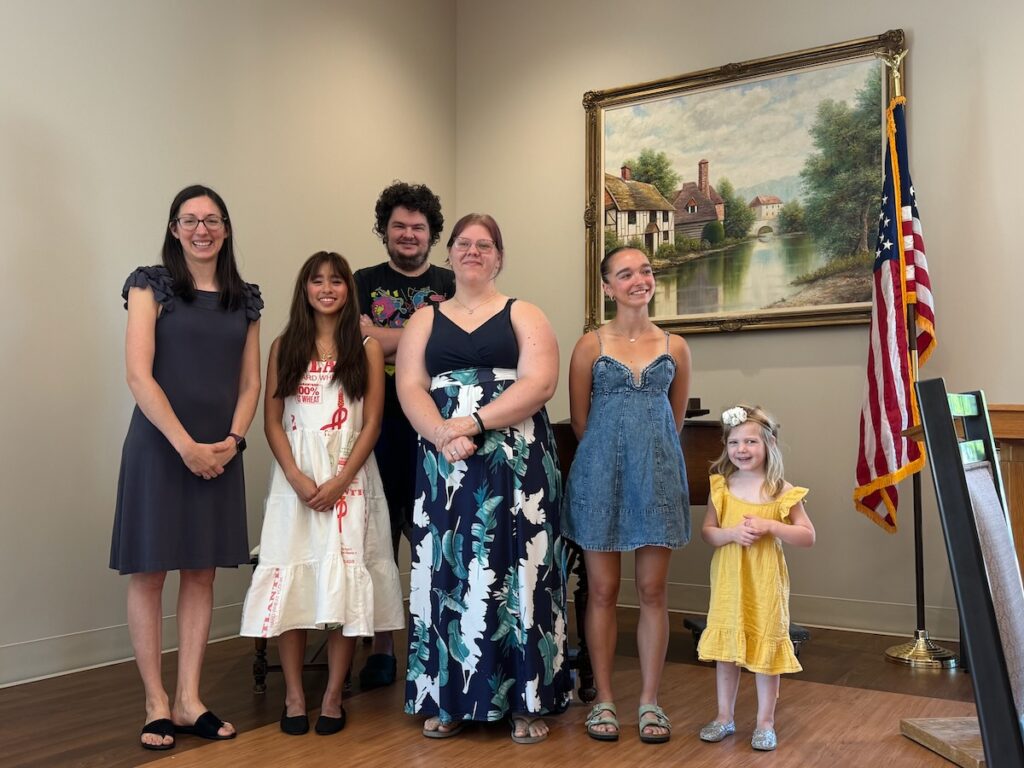
The Senior Center worked well for our needs as a recital venue, and I would definitely use it again. I’ve been holding our Ohio recitals at a park the last few years. While I love being outdoors, I found it nice not to worry about the weather cooperating — especially given my hour-long commute.
Recital #2 in Michigan
The next evening was the second recital, for my students locally here in Michigan.
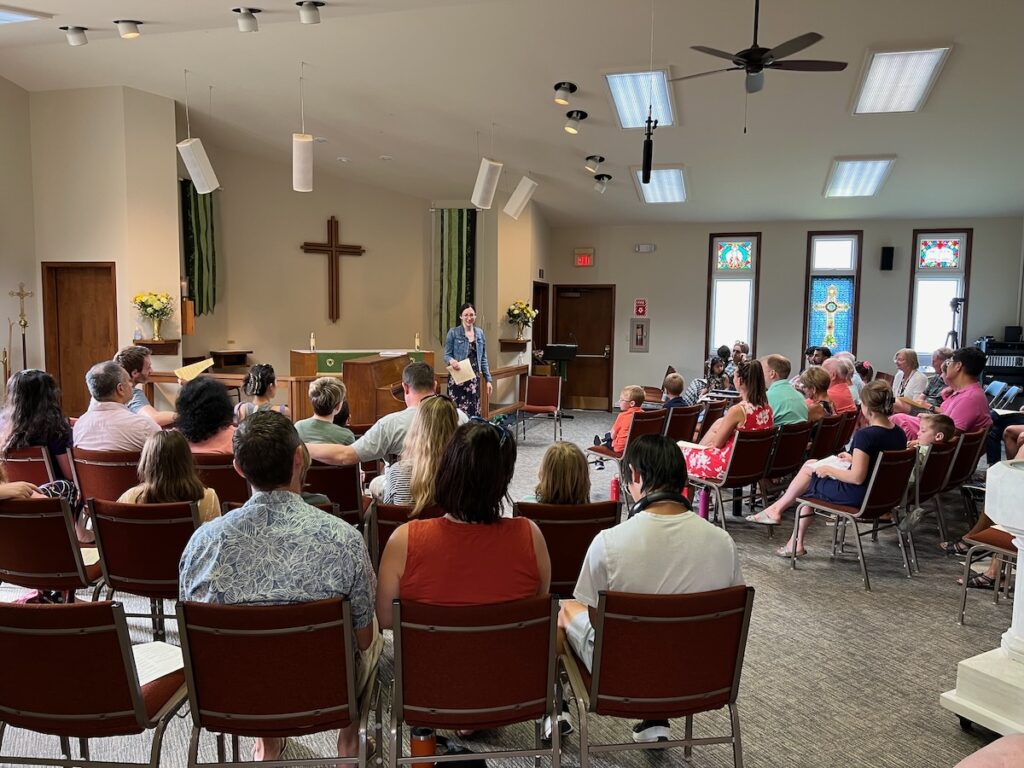
My original plan was to have this recital outdoors, under the large shade trees at the church where I am currently employed as director of music. However, the weather turned out to be humid and 90 degrees. So, at the last minute, I decided to pivot and move the recital indoors. I think it was the right call…we were very comfortable in the air conditioning!

I like to act as an “emcee” during recitals, calling each student’s turn and making short comments about them or their pieces.
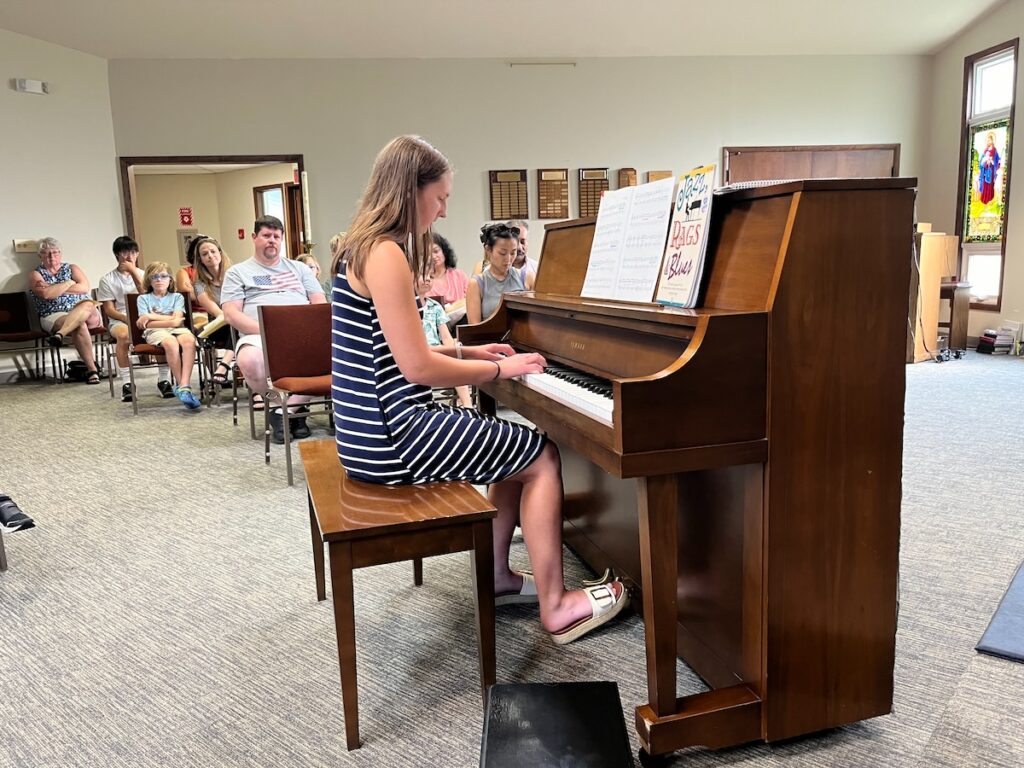
Rather using than the traditional recital order of beginner to most advanced, I like to mix up the order. I use a “wave” pattern — varying the difficulty level and styles of the pieces to keep things interesting for the listener.
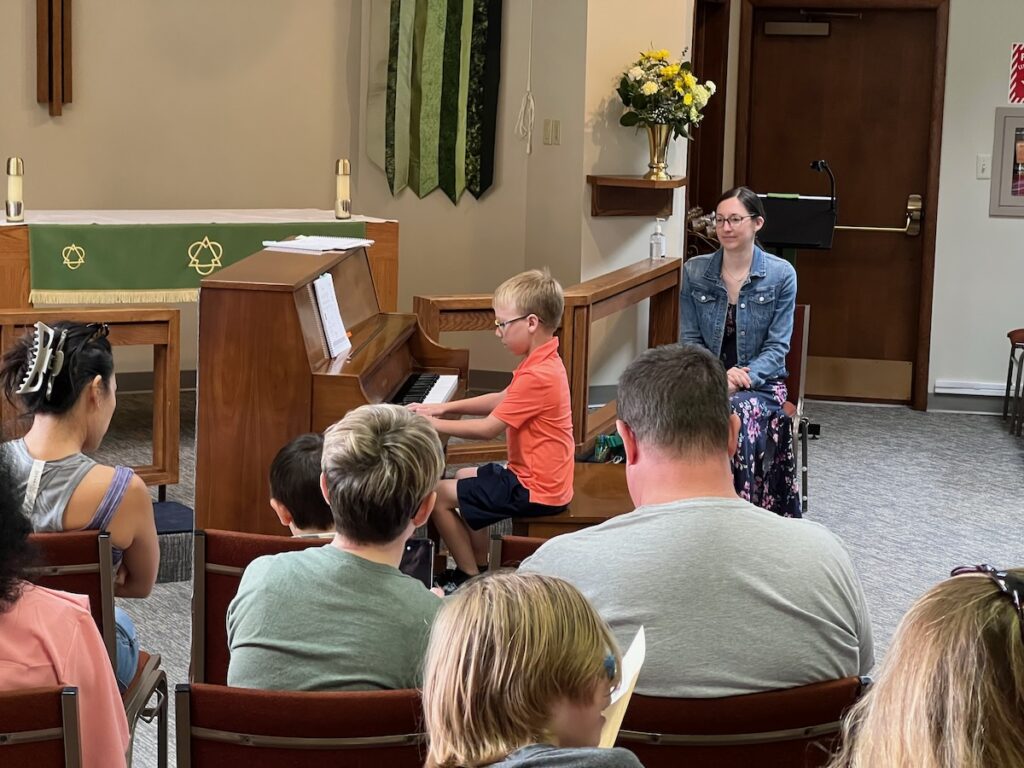
By the way, this was my 4-year-old daughter’s FIRST recital, which was special for both of us!

Three of my students together played an ensemble-version of “I Love Coffee, I Love Tea,” arranged by the Shaaks (as made popular by the Piano Safari method). The piece has six sections, which we split amongst the three students. It was entertaining to hear and watch! (If you haven’t tried this piece with your students, I highly recommend purchasing the studio-licensed PDF and teaching it to your beginner/elementary students.)
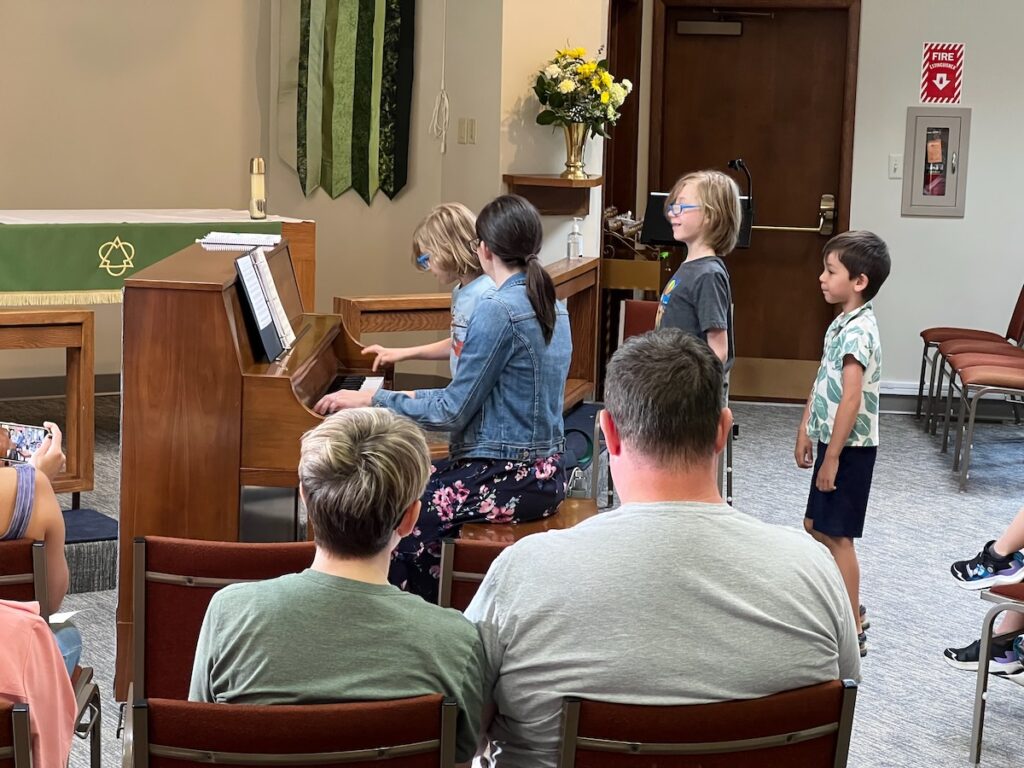
I was pleased with how the “creativity” theme worked out. As I stated in my opening words for both recitals, Western classical music performance is to me a bit like delivering a memorized speech — which is fine and all, but I really like the idea of my students also being able to use music more freely, like a language. I think it’s important to allow opportunities for students to be creative and build their skills to support improvisation in its various forms.

This recital was probably the most relaxed and comfortable recital I’ve hosted. Many of my students literally smiled as they played, and the audience was engaged and cheering them on. A variety of factors play into creating a comfortable, informal performance environment, but I think the creativity theme was a contributor, especially for my youngest of students.
Thanks for reading! I always enjoy hearing about other teacher’s recitals and have gotten so many good ideas that way. I hope you enjoyed this post.
Related:
- My 2023 Piano Studio Recitals
- Printable: Recital Program List
- Piano Recital Program Template #6
- Highlights from My Students’ Silent Film Recitals
- 5 Reasons To Perform Alongside Your Students at Studio Recitals

